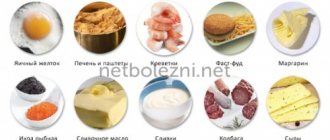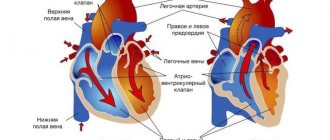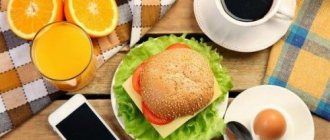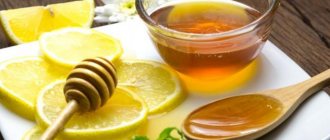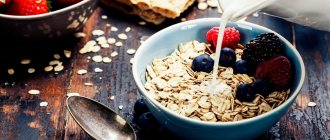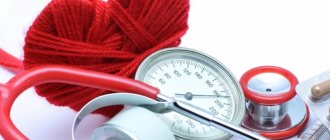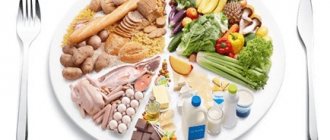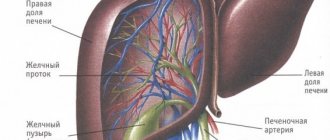Increased blood cholesterol is a problem that can lead to the development of atherosclerosis. That is why experts recommend minimizing products containing this lipoprotein compound. However, you shouldn’t completely abandon them - after all, they include both meat and eggs - irreplaceable sources of animal protein. But do not forget that you need to monitor your LDL levels. It should not be either too low or too high. We will talk about what foods contain cholesterol and how to avoid health problems associated with exceeding the norm in this article.
Our additional services: Bioimpedance | Marutaka Massage | Pressotherapy | Ion-Detox
Cholesterol: what do we know about it?
This is the second name for lipoprotein compounds - a fatty alcohol that dissolves not in water, but in lipids, which are its carriers through the bloodstream of the body. It plays not only a negative role - it causes the development of atherosclerosis - but also makes an invaluable contribution to strengthening cell membranes, is contained in the brain and acts as a structural element of the adrenal glands and gonads.
Cholesterol is also found in mother's milk, which allows the child to grow strong and healthy. So do not underestimate its effect on the functioning of our body.
Before finding out what you can’t eat if you have high cholesterol, and what you can, let’s look at the main functions of this compound:
Part of cell membranes and nerve endings.
- Strengthens the immune system and protects against cancer.
- Helps the adrenal glands and sex glands produce hormones: cortisol, estrogens, progesterone, etc.
- Stimulates brain function.
- Allows the production of vitamin D.
In total, our body contains about 350 g of cholesterol. Most of it is found in tissues, and only 10% circulates in the blood.
We produce cholesterol ourselves - such compounds are called endogenous. The liver, small intestine and other organs are responsible for their synthesis. Much less building material for cell membranes comes from food - this is exogenous fatty alcohol.
Not all cholesterol is bad. Experts divide it into two groups:
- The first includes lipoproteins that are characterized by high density. They cleanse our body of excess potentially dangerous substances, cleanse blood vessels, preventing the development of atherosclerosis.
- The second contains low-density lipoproteins, as well as triglycerides - compounds that harm our health by increasing cholesterol levels in the blood. This leads to the growth of atherosclerotic plaques, impaired blood circulation, fat and protein metabolism, blockage of blood vessels and the development of coronary heart disease.
At the same time, we should not forget that cholesterol in its free form is not dangerous. The nature of the effect on the body is determined at the stage of addition of fatty alcohol to a particular transport protein.
General description of the diet
The goal of a diet for high cholesterol is to reduce the level of “bad” cholesterol, prevent the development of pathology of the cardiovascular system, normalize the functioning of the kidneys and liver, activate metabolic processes and improve blood circulation.
The diet should meet the principle of mechanical sparing, which has a beneficial effect not only on the digestive system, but also on the cardiovascular system.
The diet for high cholesterol levels corresponds to the treatment table according to Pevzner No. 10 and No. 10C.
The treatment plan for high cholesterol includes limiting salt and fats (mainly of animal origin).
Table characteristics (per day):
- energy value is 2190 – 2570 kcal;
- proteins – 90 g, of which 55 – 60% are of animal origin;
- fats 70 – 80 gr., of which at least 30 gr. vegetable;
- carbohydrates no more than 300 g. for people with increased weight, and for people with normal body weight 350 g.
Find out more about our weight loss programs:
Preventing the accumulation of low-density lipoproteins in the body means saving yourself from problems with the heart and blood vessels, as well as... from excess weight. How does this substance affect body weight?
- There is especially a lot of cholesterol in fast food and processed foods. The more fatty, fried and high-calorie foods we eat, the greater our volumes. Trans fats, found in excess in fast food products, Big Macs and French fries, also lead to the development of obesity.
- What happens when we start gaining weight rapidly? Triglyceride and cholesterol levels increase. These compounds are insoluble in water and in blood plasma. In order to get to their “destination”, they must find a mate. Proteins act as a transport vehicle, which, in tandem with fatty alcohol, are converted into lipoproteins. If their density is low, our body will receive nothing but harm.
If the density of lipoproteins is high, they go straight to the liver, from where they then enter the intestines. Bile also comes with them. By getting a lot of bad cholesterol from food (from fast food, processed foods), we increase the load on the liver - it works to the limit of its strength and capabilities, releasing more and more fatty alcohol. As a result, its concentration increases, bile becomes thicker, even viscous, which leads to the formation of hard concretions - in other words, stones.
So there are many dangers that await those who like to eat in fast food restaurants or warm up something hearty and harmful for dinner: these are problems with the heart and blood vessels, heart attacks and strokes, obesity and cholelithiasis. The only thing we can do to help ourselves is to control what we eat and have a healthy lifestyle, which includes proper nutrition.
How do you know if the cholesterol in your blood is higher than normal? Pay attention to how you feel. The following symptoms indicate the need to change your diet:
- fast fatiguability;
- hypertension;
- frequent headaches;
- drowsiness;
- functional disorders of the intestines (diarrhea, constipation);
- poor appetite;
- nervousness.
What increases blood cholesterol: who is at risk
The levels of high and low density lipoproteins can be influenced by several factors. It is necessary to monitor your diet and avoid the predominance of high-fat foods in it if you:
- Are you suffering from excess weight?
In this case, we are talking about serious health problems, since the level of good cholesterol in obese people is low, and bad cholesterol, on the contrary, is much higher than it should be normally. In order to help your body, you just need to lose weight - not by limiting yourself and starving, but by switching to a healthy diet.
- You eat a lot of high-calorie and fatty foods
This factor is perhaps the most important, since the condition of your heart and blood vessels directly depends on what you eat. Next, we will talk about foods that contain the most harmful monofat. In the meantime, we just remind you that the calorie content of food should be minimal, and the diet should be balanced and healthy.
- You move very little
Literally from home to the store or work and back. In this case, your good cholesterol levels will be low and your bad cholesterol levels will be high, even if you are not overweight. If you are not ready for jogging and aerobics, walk more, stop riding in the elevator, walk in parks more often, and go hiking.
- You are over 50 years old
For those over twenty, cholesterol levels rise slowly, and its rise does not depend on your size or lifestyle. After fifty, the indicator freezes in men, while in women it remains at a low level - until menopause, which is followed by a new upward spurt.
- Your parents suffer from heart disease
These problems can be inherited, which means you have every chance of developing high cholesterol.
- Do you smoke
Tobacco smoking affects the level of good lipoproteins, reducing their concentration in the blood. This leads to diseases of the cardiovascular system.
- You have problems with the thyroid gland
In this case, exceeding the norm may indicate diabetes or hypothyroidism, since it itself is a consequence of disturbances in the functioning of the endocrine gland.
What not to eat if you have high cholesterol: rules for creating a diet
Nutrition is one of the main factors influencing the dynamics of an important compound in the blood. It is through food that we get about 25% of all fatty alcohol. Therefore, it is especially important to monitor the combination of products. Excluded:
- lamb, pork and other fatty meats;
- smoked meats and semi-finished products;
- fast food;
- hard margarine;
- Fried fish;
- oil creams;
- candied fruits;
- candies;
- high-calorie nuts (hazelnuts, peanuts);
- mayonnaise and fatty sauces;
- coffee;
- soda.
These are prohibited foods for high cholesterol. Their excessive consumption can lead to the formation of atherosclerotic plaques, the development of coronary heart disease, as well as obesity and cholelithiasis.
High-calorie meat is one of the first to be excluded from the diet. For example, the liver contains an abundance of harmful compounds, so if you do not want to risk your health and figure, avoid this offal. Also leading positions are occupied by duck and goose meat - a storehouse of bad cholesterol. Even when cooking chicken, it is advisable to remove the skin from the carcass to prevent excess fat from entering the body.
It is also necessary to remove sausages and sausages, store-bought sausages, as well as fast food and margarine from the diet. Donuts, chips and other unhealthy treats contain trans fats that can double the concentration of lipoproteins.
You can find out what those who are concerned about their health should not eat and what foods should be excluded if they have high cholesterol can be found in the table.
The black list included margarine and full-fat milk, butter, red meat and processed foods. The ideal option is to refuse such food. Its minimal presence in the diet is also welcome. The main thing is to carefully monitor what you eat (you can use a food diary for this).
Now let’s talk about those healthy and tasty food helpers that reduce lipoprotein levels and help avoid obesity and heart disease.
Foods with high cholesterol levels
The disease of excess lovers
Atherosclerosis is one of the most common vascular diseases. It can be caused not only by excess nutrition, but also by bad habits.
1. Most cholesterol is found in fatty meats.
- beef and pork. Try not to buy fatty brisket, neck, tenderloin, ribs and other cuts of carcass that contain a large amount of fat.
Remember that a large amount of hidden fat
It is even found in pork fillet. A good alternative to such a product would be lean chicken and turkey.
2. Avoid such by-products
, like the liver, lung and brains. One serving (about 200 g) can contain most of the daily value of cholesterol.
3. Increased Saturated Fat and Cholesterol in Processed Meats
: ham, sausages, sausages, canned meats and smoked meats.
Even boiled sausage without lard contains hidden fats. In addition, these foods contain too much salt.
Fatty poultry also contains a lot of cholesterol.
- goose or duck. Avoid frying these foods in fat, trim off excess fat, and choose dark meat from the breast or legs of the bird after removing the skin.
5. Eggs are often accused of containing excess cholesterol. However, compared to fatty meat or smoked meats, eggs contain so much of this substance.
However, experts recommend limiting your consumption to one egg per day.
or prepare meals using only proteins. You shouldn’t completely give up eating eggs: they contain many useful substances.
6. Major suppliers of cholesterol are butter, cheeses, sour cream and full-fat yoghurts.
, which usually also contain large amounts of added sugar.
Nutritionists recommend consuming skim or low-fat milk and other dairy products containing no more than two and a half percent fat.
7. The lion's share of cholesterol enters the human body through semi-finished products, industrial baked goods, and desserts.
and fast food. These foods contain trans fats as well as high amounts of saturated fat.
What reduces cholesterol at home?
- Cherry
Doctors have proven that if you use it every day, you will not know what arthritis and diabetes are. You can eat cherries both fresh and heat-treated - in jams, compotes, jelly. It is believed that the richer the color, the greater the benefit, so your goal is bright red, almost black berries.
- Artichokes
This plant helps to cope not only with problems in the genitourinary area, but also with high cholesterol. The extract of the edible inflorescence has a healing effect.
- Blueberry
Another member of our list, rich in antioxidants and vitamins. These include a substance called pterostilbene, which affects low-density lipoproteins, affecting the level of harmful molecules in the blood.
- Walnuts
What else can you eat if you have high cholesterol? Nuts containing monosaturated fats. However, you won’t be able to eat a lot of them - they are high in calories and can harm your figure. So it is better to introduce them into the diet in small portions so as not to gain new kilograms.
- Tea
You can drink both black and green. About 5 cups of aromatic drink per day is enough - this is the optimal amount to enjoy the pleasant taste and not harm yourself.
- Olive oil
Another irreplaceable product that is eaten for high cholesterol. Vegetable oil from olive fruits contains healthy monosaturated fats, just like walnuts.
- Beans
It contains fiber, which removes excess harmful substances from the body. American researchers have proven that regular consumption of about 300 g of beans (not canned, but boiled) over three weeks helps to return to normal levels.
Here's what you can and shouldn't eat if you have high cholesterol. But there are also products whose dangers or miraculous properties are exaggerated. This:
- Eggs - they do not provoke the development of atherosclerosis. Two eggs a day will not ruin your health. Do not forget about this valuable source of animal protein and refuse it, like, for example, fatty meat, which is also rich in protein.
- Garlic - it was said that it can reduce cholesterol levels. It turned out that this is just a myth. This is exactly the conclusion that researchers came to when they proved in an experiment that daily consumption of the “king of spices” does not affect important indicators in any way - it only affects breathing and gives sweat a specific smell.
Look at our Clients' Acknowledgments and Success Stories - View
Our specialists will tell you which foods you can and cannot eat if you have high cholesterol, and will give recommendations taking into account your health condition and body characteristics, so that you can lose excess weight without problems. We do not prohibit, but allow everything that is healthy and delicious - in reasonable quantities. Come visit us and find out how proper nutrition can help you lose weight.
Authorized Products
Proper nutrition for high cholesterol should become the norm. What should it be? First of all, you need to exclude meat broths - prepare vegetarian soups; if this is difficult and unusual for you, then you can use weak secondary broth for first courses and carefully skim off the fat. Use potatoes in minimal quantities and it is better to prepare combined vegetable soups, cabbage soup and borscht.
Meat and poultry should be taken of lean types; poultry skin is unacceptable; additional fat should be trimmed from the meat. Since the diet involves limiting fat, the meat should be boiled or baked without adding sour cream, mayonnaise or any fat. Use vegetables as a side dish, not cereal. It is better to cook them for breakfast (oatmeal, buckwheat and brown rice).
Cabbage (all types), carrots, zucchini, pumpkin, eggplant, or salads made from fresh vegetables and green peas will help lower cholesterol levels. The total amount of vegetables eaten per day is at least 400g.
Use virgin vegetable oils to season ready-made dishes. omega-3 fatty acids, which regulate the production of beneficial lipids, is useful in this regard .
Lowering cholesterol levels can be achieved by introducing low-fat sea fish into the diet, but the consumption of meat (chicken) should still be limited to once a week. When it comes to fish, you should choose dietary varieties: hake, haddock, blue whiting, navaga, pollock, pollock.
Bread made from rye, grain flour and bran is allowed. You can use yeast-free bread (with bran, with flax seeds) for snacks and first courses. Milk and fermented milk products are allowed only in low fat content and in limited quantities. Green tea and weak coffee with milk and without sugar, vegetable and fruit juices without sugar are allowed.
Table of permitted products
| Proteins, g | Fats, g | Carbohydrates, g | Calories, kcal | |
Vegetables and greens | ||||
| eggplant | 1,2 | 0,1 | 4,5 | 24 |
| beans | 6,0 | 0,1 | 8,5 | 57 |
| zucchini | 0,6 | 0,3 | 4,6 | 24 |
| cabbage | 1,8 | 0,1 | 4,7 | 27 |
| broccoli | 3,0 | 0,4 | 5,2 | 28 |
| Brussels sprouts | 4,8 | 0,0 | 8,0 | 43 |
| cauliflower | 2,5 | 0,3 | 5,4 | 30 |
| green onion | 1,3 | 0,0 | 4,6 | 19 |
| bulb onions | 1,4 | 0,0 | 10,4 | 41 |
| carrot | 1,3 | 0,1 | 6,9 | 32 |
| cucumbers | 0,8 | 0,1 | 2,8 | 15 |
| squash | 0,6 | 0,1 | 4,3 | 19 |
| salad pepper | 1,3 | 0,0 | 5,3 | 27 |
| parsley | 3,7 | 0,4 | 7,6 | 47 |
| salad | 1,2 | 0,3 | 1,3 | 12 |
| beet | 1,5 | 0,1 | 8,8 | 40 |
| celery | 0,9 | 0,1 | 2,1 | 12 |
| soybeans | 34,9 | 17,3 | 17,3 | 381 |
| asparagus | 1,9 | 0,1 | 3,1 | 20 |
| tomatoes | 0,6 | 0,2 | 4,2 | 20 |
| Jerusalem artichoke | 2,1 | 0,1 | 12,8 | 61 |
| pumpkin | 1,3 | 0,3 | 7,7 | 28 |
| dill | 2,5 | 0,5 | 6,3 | 38 |
| beans | 7,8 | 0,5 | 21,5 | 123 |
| garlic | 6,5 | 0,5 | 29,9 | 143 |
| lentils | 24,0 | 1,5 | 42,7 | 284 |
Fruits | ||||
| avocado | 2,0 | 20,0 | 7,4 | 208 |
| oranges | 0,9 | 0,2 | 8,1 | 36 |
| pomegranate | 0,9 | 0,0 | 13,9 | 52 |
| grapefruit | 0,7 | 0,2 | 6,5 | 29 |
| pears | 0,4 | 0,3 | 10,9 | 42 |
| lemons | 0,9 | 0,1 | 3,0 | 16 |
| mango | 0,5 | 0,3 | 11,5 | 67 |
| tangerines | 0,8 | 0,2 | 7,5 | 33 |
| nectarine | 0,9 | 0,2 | 11,8 | 48 |
| peaches | 0,9 | 0,1 | 11,3 | 46 |
| apples | 0,4 | 0,4 | 9,8 | 47 |
Berries | ||||
| gooseberry | 0,7 | 0,2 | 12,0 | 43 |
| Red currants | 0,6 | 0,2 | 7,7 | 43 |
| black currant | 1,0 | 0,4 | 7,3 | 44 |
Nuts and dried fruits | ||||
| nuts | 15,0 | 40,0 | 20,0 | 500 |
| almond | 18,6 | 57,7 | 16,2 | 645 |
| flax seeds | 18,3 | 42,2 | 28,9 | 534 |
| fenugreek seeds | 23,0 | 6,4 | 58,3 | 323 |
| sunflower seeds | 20,7 | 52,9 | 3,4 | 578 |
Cereals and porridges | ||||
| buckwheat (kernel) | 12,6 | 3,3 | 62,1 | 313 |
| oat groats | 12,3 | 6,1 | 59,5 | 342 |
| cereals | 11,9 | 7,2 | 69,3 | 366 |
| wheat bran | 15,1 | 3,8 | 53,6 | 296 |
Raw materials and seasonings | ||||
| basil | 2,5 | 0,6 | 4,3 | 27 |
| honey | 0,8 | 0,0 | 81,5 | 329 |
Dairy | ||||
| kefir 0% | 3,0 | 0,1 | 3,8 | 30 |
| kefir 1% | 2,8 | 1,0 | 4,0 | 40 |
Cheeses and cottage cheese | ||||
| cottage cheese 0.6% (low fat) | 18,0 | 0,6 | 1,8 | 88 |
| curd tofu | 8,1 | 4,2 | 0,6 | 73 |
Meat products | ||||
| beef | 18,9 | 19,4 | 0,0 | 187 |
Bird | ||||
| chicken fillet | 23,1 | 1,2 | 0,0 | 110 |
| turkey | 19,2 | 0,7 | 0,0 | 84 |
Eggs | ||||
| eggs | 12,7 | 10,9 | 0,7 | 157 |
Fish and seafood | ||||
| fish | 18,5 | 4,9 | 0,0 | 136 |
| seaweed | 0,8 | 5,1 | 0,0 | 49 |
Oils and fats | ||||
| grape seed oil | 0,0 | 99,9 | 0,0 | 899 |
| linseed oil | 0,0 | 99,8 | 0,0 | 898 |
| olive oil | 0,0 | 99,8 | 0,0 | 898 |
| sunflower oil | 0,0 | 99,9 | 0,0 | 899 |
Non-alcoholic drinks | ||||
| mineral water | 0,0 | 0,0 | 0,0 | — |
| instant chicory | 0,1 | 0,0 | 2,8 | 11 |
| green tea | 0,0 | 0,0 | 0,0 | — |
| * data is per 100 g of product | ||||
